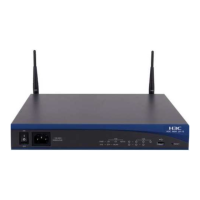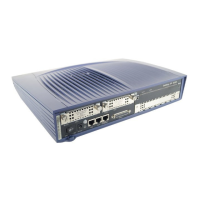Step 4 (Optional) Run:
peer peer-address connect-interface loopback interface-number
An interface is specified to create the TCP connection.
This step is required if you use a loopback interface to set up the BGP session. The loopback
interface address with a 32-bit mask is recommended to establish the MP-IBGP peer relations
between the PEs. This ensures that packets can find the correct route in the case of route
aggregation. The route to the loopback interface is advertised to the remote PE through IGP on
the MPLS backbone network.
Step 5 Run:
l2vpn-family
The BGP L2VPN address family view is displayed.
Step 6 Run:
peer peer-address enable
A specified peer is enabled.
----End
4.6.4 Configuring a VPN
Context
Do as follows on the PEs on the two ends of the VC.
Procedure
Step 1 Run:
system-view
The system view is displayed.
Step 2 Run:
mpls l2vpn l2vpn-name encapsulation { ethernet | vlan } [ control-word | no-control-
word ]
A VPN is created and the MPLS L2VPN view is displayed.
Step 3 Run:
route-distinguisher route-distinguisher
The RD is configured for the L2VPN.
Step 4 (Optional) Run:
mtu mtu-value
The MTU of the VPN is configured.
The MTUs of the VPNs must be the same on the entire network. If the MTUs of a VPN on two
PEs are different, the two PEs cannot exchange reachable information or set up connection. By
default, the MTU in the L2VPN view is 1500.
The equipment of some vendors cannot check the MTU in the L2VPN instance. When the is
interconnected with the equipment of other vendors, you should perform the following
configurations to ensure that the VC link is Up:
Quidway S9300 Terabit Routing Switch
Configuration Guide - VPN 4 VLL Configuration
Issue 03 (2009-08-20) Huawei Proprietary and Confidential
Copyright © Huawei Technologies Co., Ltd.
4-19

